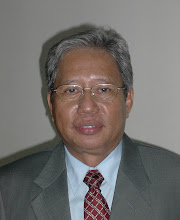According to UN estimates that release in March 11th, 2009 the worlds population was projected to exceed nine billion in 2050, up from 6.8 this year and seven billion early in 2012. The additional 2.3 billion are mostly in the developing world, which was estimated to increase from 5.6 billion this year to 7.9 billion in 2050. During the same period population in the developed nations was estimated to rise from 1.23 billion to 1.28 billion. This estimate figure included the projected net immigration that are coming from developing countries at a rate of 2.4 million persons annually from 2009 to 2050. Within the developing countries population for 49 least developed countries is going to be doubled from 0.84 billion to 1.7 billion, while for the rest of third would its population is increasing from 4.8 billion to 6.2 billion during the same period.
It should be noted tht the most probable scenario of future direction of fertility rates are its declines from 2.56 children per women in 2005 - 2010 to 2.02 children per women in 2045 - 2050. However, slowing population growth by reduction of fertility rates leads to population aging.
The 5th World Water Forum, which was held in Istambul from 16 to 22 March 2009, among others addressing around 880 million people that currently without decent source of drinking water, while 2.5 billion people do not have access to proper sanitation. This report from Organization for Economic Cooperation and Development, also stated that by 2030 the number of people living under severe water stress is expected to rise to 3.9 billion, only due to the increase of world population. According to UN's Food and Agricultural Organization (FAO) farming accounts for 70% of water use is a huge amount that need to be addressed. All these issues have been debated over water should be considered as a fundamental "right" or a "need". Other burning issue, as mentioned by the Indonesian minister of public works, is that South East Asia were already beginning to be affected by climate change, which was affecting rainfall pattern, and harvests. Recently, severe water related disasters have occured in high intensity.
It should be noted tht the most probable scenario of future direction of fertility rates are its declines from 2.56 children per women in 2005 - 2010 to 2.02 children per women in 2045 - 2050. However, slowing population growth by reduction of fertility rates leads to population aging.
The 5th World Water Forum, which was held in Istambul from 16 to 22 March 2009, among others addressing around 880 million people that currently without decent source of drinking water, while 2.5 billion people do not have access to proper sanitation. This report from Organization for Economic Cooperation and Development, also stated that by 2030 the number of people living under severe water stress is expected to rise to 3.9 billion, only due to the increase of world population. According to UN's Food and Agricultural Organization (FAO) farming accounts for 70% of water use is a huge amount that need to be addressed. All these issues have been debated over water should be considered as a fundamental "right" or a "need". Other burning issue, as mentioned by the Indonesian minister of public works, is that South East Asia were already beginning to be affected by climate change, which was affecting rainfall pattern, and harvests. Recently, severe water related disasters have occured in high intensity.

Comments